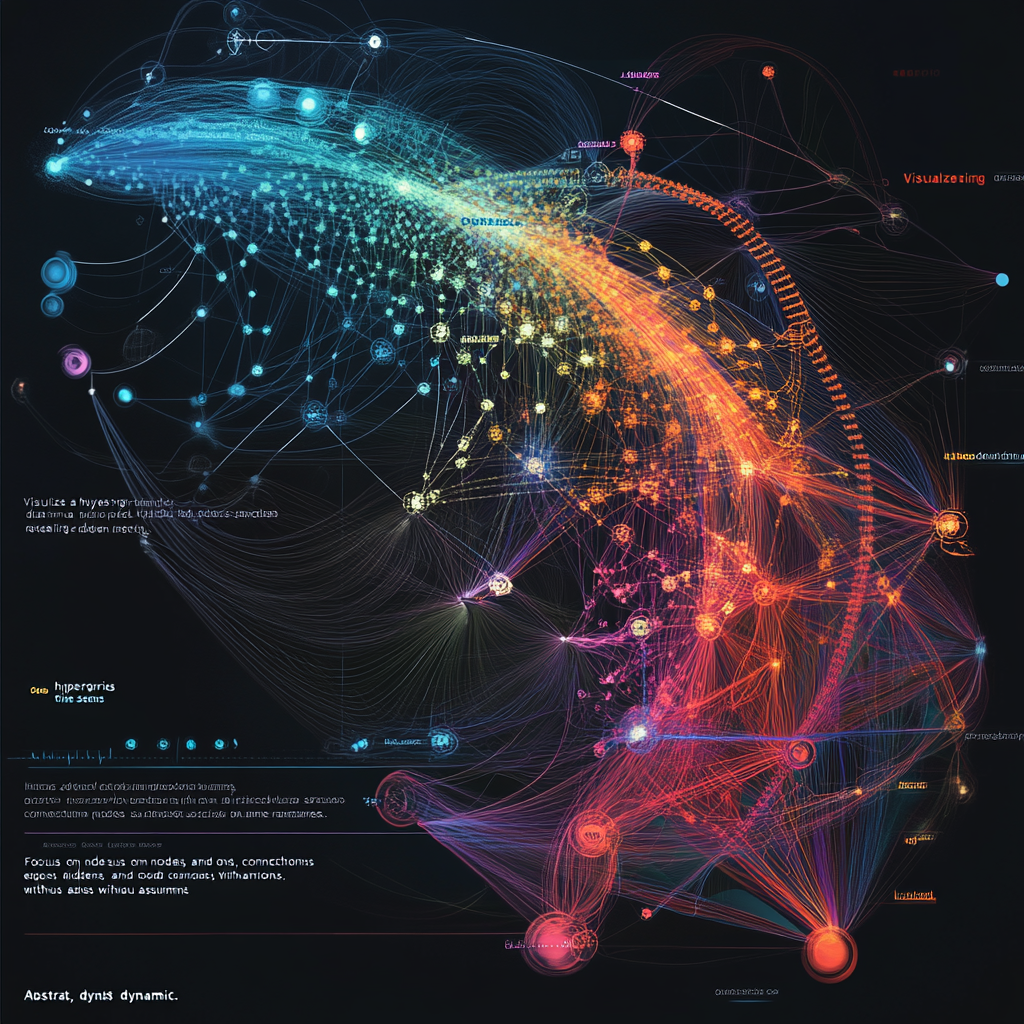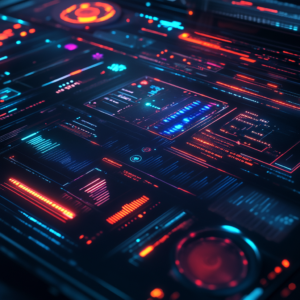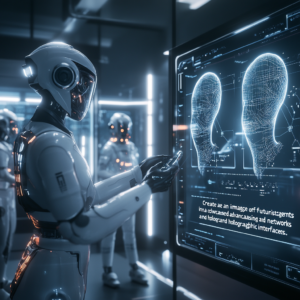
Mapping dynamical systems: New algorithm infers hypergraph structure from time-series data without prior knowledge
Decoding Complexity: The Hypergraph Revolution in Data Science
Imagine stepping into a mesmerizing dance of starlings, their aerial ballet weaving and swooping in perfect synchronicity, or peering into the enigmatic neural rhythms of the human brain—an orchestra of thoughts and impulses firing through synapses. For years, scientists faced the daunting challenge of peering behind the curtain, trying to decipher the intricate web of relationships and structures hidden within observable dynamics. It's a bit like playing a game of detective, and recently, a revolutionary algorithm has burst onto the scene, dramatically changing the rules of the game. This algorithm takes time-series data—those sequential snapshots of events—and transforms them into hypergraph blueprints without requiring any prior knowledge of the underlying structures.
Why Hypergraphs? From Bird Brains to Market Chaos
Let's take a moment to ponder the good old traditional networks: neat little webs of nodes and edges that seem to work perfectly well until they’re confronted with the chaotic beauty of group dynamics. Consider the phenomenon of collective intelligence, like how fish schools seem to make split-second decisions to evade predators. This isn't a lone fish deciding for itself; it's a collective consensus in motion. Now, switch gears to the 2008 financial crash. That debacle saw mortgage defaults rippling through multi-layered financial instruments like dominoes in a deadly chain reaction. Pair that with the brain's own neural avalanches, where patterns of synchronized firing can leap from harmony to chaos, and it’s clear: traditional networks simply don’t capture the depth of these interactions.
Enter Yuanzhao Zhang and his talented crew at the Santa Fe Institute. They tackled this conundrum head-on, treating each timestamp in a dataset as a cryptographic puzzle waiting to be solved. Their groundbreaking algorithm dexterously reverse-engineers these hyperedges—the mathematical equivalents of group chat participants—from temporal patterns laid bare in the data.
The Algorithm’s Secret Sauce: Temporal Forensics 101
This is not just another run-of-the-mill machine learning black box; oh no, it’s much more captivating. Their method treats each entry in a time-series like a piece of evidence straight out of a crime scene investigation. The steps are intriguing in their own right:
- Pattern Extraction: The algorithm isolates recurring motifs across different time windows, identifying common threads that tie the chaos together.
- Relational Inference: Using the elegant language of mathematical topology, it distinguishes simple pairwise interactions from the rich tapestry of group dynamics.
- Hypergraph Assembly: This is where the magic happens. The algorithm constructs multi-node connections that optimally explain observed behaviors, mapping the complex interactions as they unfold.
What makes this approach so revolutionary? It does not assume any preconceived notions about the types of interactions that might exist. Instead, it allows the data itself to unveil the structure it resides in—an "agnostic detective" approach that can model everything from viral spreads in urban environments to the proliferation of memes across social media platforms.
Real-World Sorcery: From Pandemics to Crypto Markets
We’re already witnessing the early adopters of this transformative tool wielding it like the fabled Excalibur:
- Epidemiology: By mapping superspreader events, the researchers reveal how groups of three or more individuals interact differently than pairs. This isn’t just curiosity; it’s a key insight for managing public health.
- Neurology: Identifying neural clique patterns that emerge before epileptic seizures could revolutionize preventative measures, saving lives in the process.
- Finance: The algorithm is detecting latent connections amidst crypto assets, traditional markets, and the ever-shifting landscape of social sentiment—after all, human behavior is notoriously difficult to predict.
Their recent paper published in Nature Communications sheds light on how this algorithm consistently outperforms traditional network models, especially in capturing those nail-biting phase transitions—those critical moments when the systems flip from order to chaos.
The Dark Arts and Bright Futures
But wait, before we place our rose-colored glasses firmly on, let’s acknowledge that every groundbreaking innovation has its shadows. While this algorithm democratizes complex system modeling, it also opens the door to potential dark paths:
- Behavioral Prediction: Imagining the ability to anticipate protest dynamics through social media hypergraphs can be a double-edged sword.
- Market Manipulation: Identifying fragile hyperedges in global supply chains could lend itself to nefarious uses.
- Biological Warfare: The ability to reverse-engineer population immunity landscapes presents significant ethical dilemmas.
Yet amidst the shadows, the brighter applications are shining with promise. This framework already sees applications surfacing in the realms of quantum systems and advanced material design. Zhang articulates it well: the goal isn’t merely about model-making; it’s about uncovering hidden architectures, realities that even the participants within these systems themselves might not consciously comprehend.
The Language of Complexity Gets a New Grammar
What this algorithmic leap accomplishes for complex systems parallels what the Rosetta Stone did for the understanding of ancient Egyptian hieroglyphs. By transforming time-series data into formatted cryptographic messages from hypergraph-structured systems, we’re not just sitting back and observing complexity; we’re learning to engage in conversation with it. Each interaction becomes a step toward grasping the often bewildering nature of intricate systems, a compelling prospect that fills us with awe and excitement.
Want to stay up to date with the latest news on neural networks and automation? Subscribe to our Telegram channel: @channel_neirotoken.

